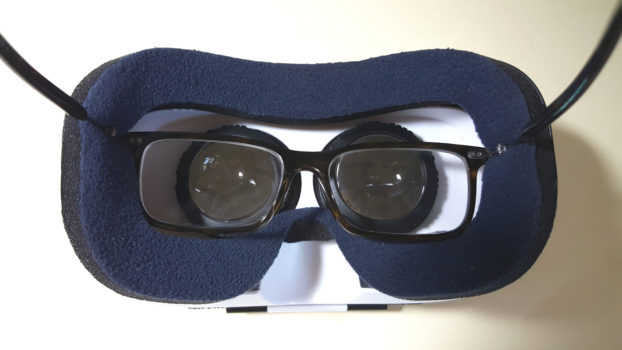I really liked the first FiiT VR headset that I tried, and when the FiiT VR 2S came out, I had to order it.
It has the same field of view, but weighs a little less, and is better for augmented reality since the outside cover is almost completely open.
Disclosure: I bought this FiiT VR 2S headset with my own money, and the purchase links at the bottom of this article are to all the major sites I know that carry it, with affiliate links where available.
1. Field of view
The FiiT VR 2S headset is listed at 102 degrees of field of view, which is pretty good — the Gear VR, by comparison, is 96, as is the the Leji VR Mini, another light-weight VR headset that I’m very enthusiastic about.
You can still see a border around the edges of your vision, but it’s relatively unobtrusive and doesn’t detract a lot from the immersion of the experience.
However, as you can see in the animation below, users with larger phones will not be able to see the full phone screen. However, if they made the opening bigger, then outside light would get in — and smaller phones might not even be able to stay in place. In the future, maybe viewers can have an adjustable opening?
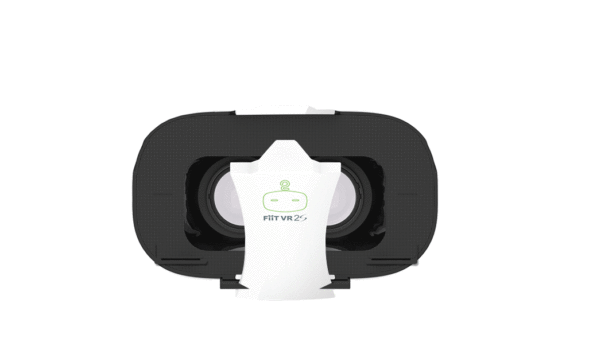
2. Weight
It weighs about 9 ounces, just a little less than the original FiiT VR’s 10 ounces. That’s a pretty reasonable weight for an enclosed headset, though not as light as the Leji VR Mini, which is 7 ounces in a slightly smaller set.
The plastic that it is made of feels less substantial and cheaper than that of other headsets that I’ve tried, but then again, it’s extremely light-weight for its size, so maybe I shouldn’t complain. I haven’t used this headset long enough to see how sturdy it is, but given that it will be obsolete in a few months anyway, I’m not too worried about that.
3. Straps
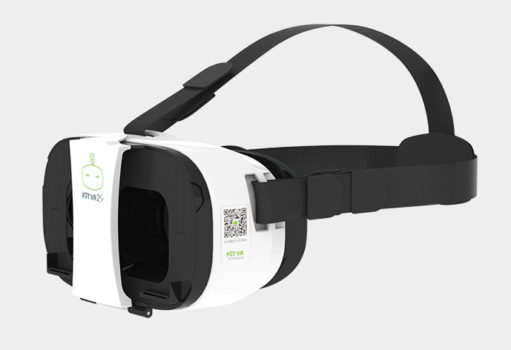
Standard three-way straps. Stretchy enough to make taking the headset on and off very comfortable, but not so stretchy that they don’t hold the headset in place. In other words, appropriate stretchiness for the weight of the headset.
All three connection points are standard Velcro systems, with no weird tricky-to-use hooks.
4. Fits over glasses
Yes, but it’s a tight fit. Fortunately, the padding is very forgiving, so I am able to use my glasses with it. To be exact, the distance across is 4.75 inches.
5. Adjustable lenses
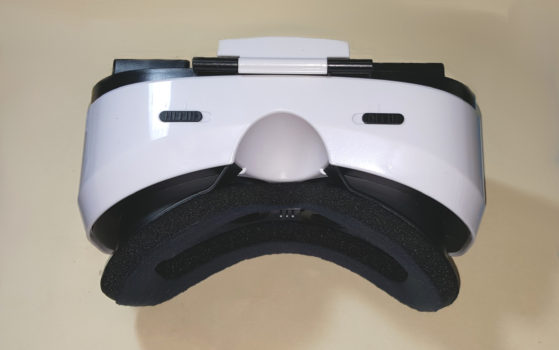
There are tabs on the bottom of the headset to move the lenses closer together or further apart.
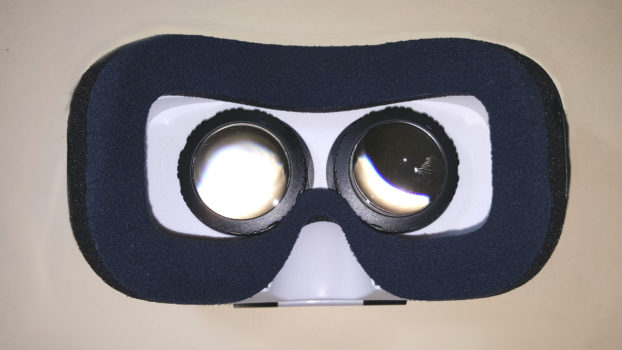
Plus, the focus of each lens can be adjusted individually by twisting the lens itself. That means that you have to take off the headset while adjusting the focus, unless you stick your finger in between your eyes and the headset.
6. Ready for augmented reality
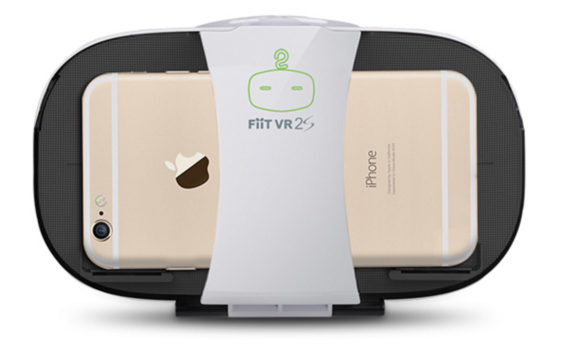
Yes, this headset is ready for augmented reality. As you can see in the image above, part of the outside cover is transparent, allowing the phone’s camera to see out. In my case, my camera is able to look out.
7. Fits over cables
Plenty of room for cords of all kinds to be plugged in, since most of the the back and sides of the phone are exposed.
8. Controller
There’s no button on the headset, so you will either have to take the phone out of its holder, use apps that don’t require a button, or — if you have an Android phone — buy an external controller.
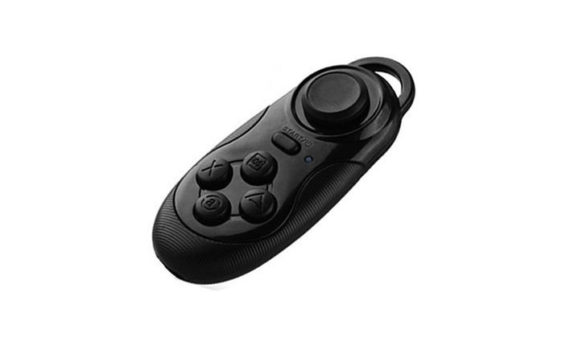
My headset actually came with a tiny external controller but some distributors might not include one in the package, or include a different one than the one I received.
9. Price
I got mine for $17.46 from GearBest. It’s also available for $22 from Amazon, $17 from AliExpress, and $20 from GeekBuying.
That’s a little bit more than the Leji VR Mini but might be worth it for the additional comfort, better lens adjustments, and ease of use.
10. Ease of use
This headset is very easy to use, just snap the flap open, drop the phone in, and snap the flap closed. I actually like the mechanism better than that of the Leji, where the flap is spring-loaded and makes positioning the phone a little bit more difficult.
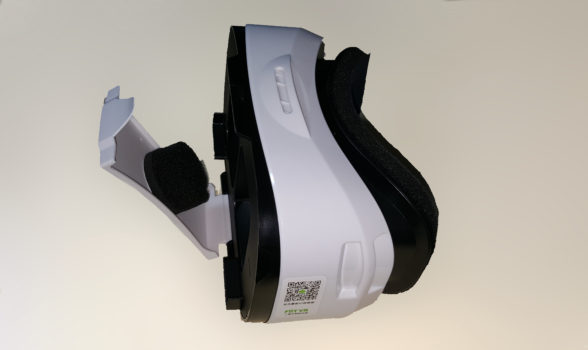
It did not come with a Google Cardboard QR Code — the QR Code you see on the side in the picture above goes to the company’s Chinese app. But VR Kommando has created one, which I’m pasting below:
To use the headset, download the Google Cardboard app for iOS or Android and point it at the QR Code above. More details here.
Bottom line
I like this headset a lot. It’s not that much heavier than the Leji VR Mini, which is the headset that I use the most right now. And the lens adjustments are better, as is the flap mechanism. It’s also wider and a bit more comfortable.
I think this is going to be my new favorite headset, at least until the next one comes along.
Watch VR Kommando’s video review of the headset below:
- OSgrid back online after extended maintenance - April 16, 2025
- Analysts predict drop in headset sales this year - March 25, 2025
- OSgrid enters immediate long-term maintenance - March 5, 2025

